Growth is expected to remain above 3% in 2017 and 2018, but the economy remains vulnerable to adverse developments in the automotive sector.
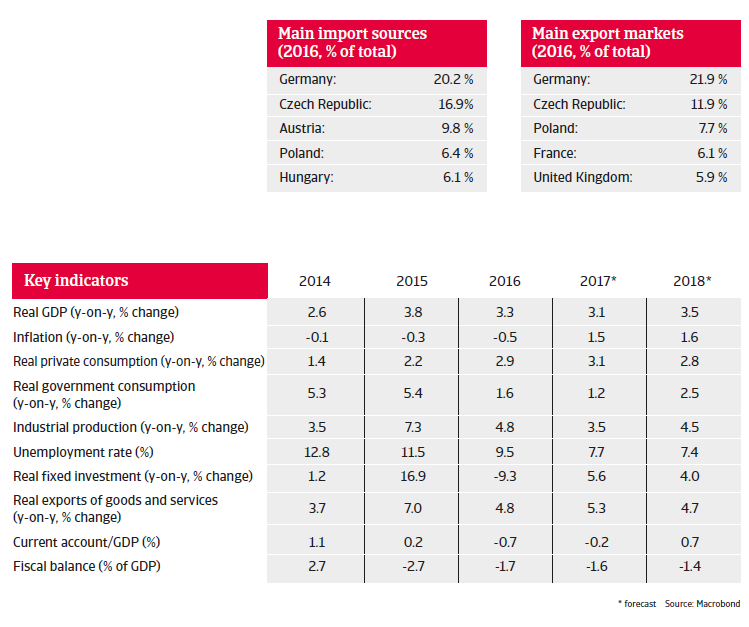
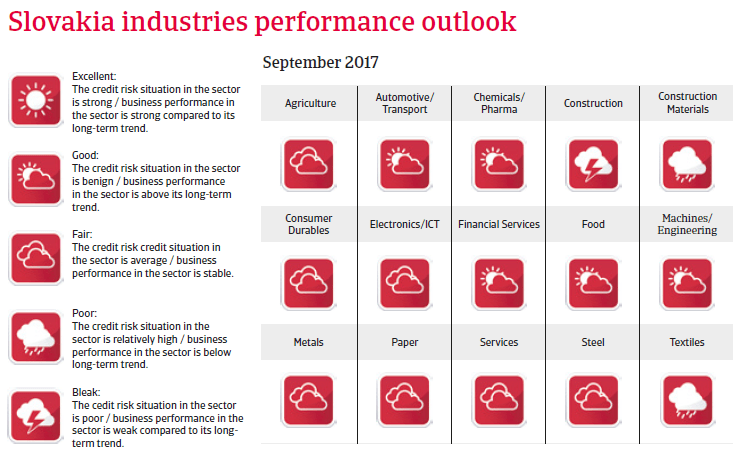
Political situation
Head of state: President Andrej Kiska (since June 2014)
Head of government: Prime Minister Robert Fico (since April 2012)
Population: 5.4 million
Ruling party lost its absolute majority in the March 2016 elections
In the March 2016 general elections, which were mainly focused on the European migrant crisis, the ruling social-democratic Smer-SD party lost more than 15% and its absolute majority in parliament, mainly at the expense of nationalist and right-wing parties. Despite the losses the Smer-SD remained the largest party in parliament and forms a coalition government together with the nationalist SNS party and the liberal conservative Most-Híd party.
Economic situation
Growth forecast to remain above 3% in 2017 and 2018
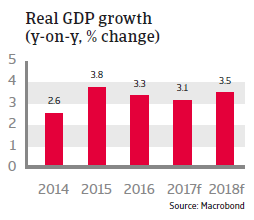
The Slovakian economy grew 3.3% in 2016, and growth is expected to remain above 3% in 2017 and 2018 (3.1% and 3.5% respectively), driven by continued robust domestic demand, surging investment and exports to the eurozone.
Private consumption is forecast to continue to be one of the primary drivers of the economic expansion, fueled by rising household incomes. The labour market shows strong improvement, with the unemployment rate expected to continue its decrease from 14.1% in 2013 to 7.7% in 2017 and 7.4% in 2018, mainly due to improving domestic economic conditions.
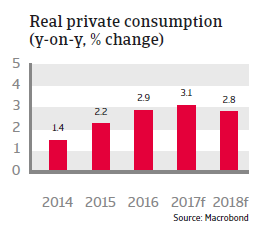
Exports are expected to continue to grow in 2017 and 2018, mainly driven by the favourable outlook of the automotive industry. Large foreign investments have increased productivity and export opportunities. Business investments and infrastructure spending is expected to grow.
Government finances are stable with the budget deficit being kept below 3% of GDP since 2013. The budget deficit is expected to decrease to 1.6% in 2017 and 1.4% in 2017. Public debt amounts to 52% of GDP.
Slovakia´s external economic position is solid. The current account deficit is expected to turn into a surplus in 2018.
Highly dependent on (automotive) exports
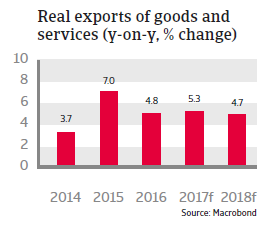
As the Slovakian economy is heavily reliant on industrial exports (especially automotive related) to the eurozone and Germany in particular, it remains very vulnerable to a eurozone downturn and/or adverse developments in the automotive sector.

